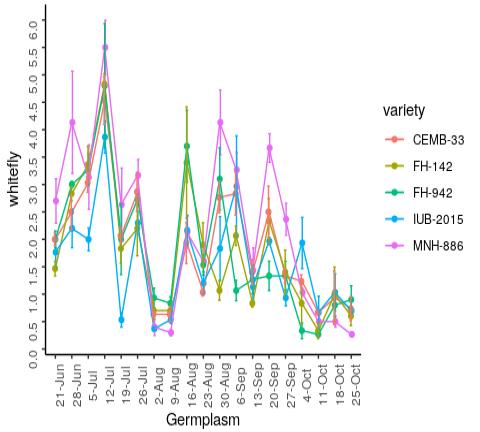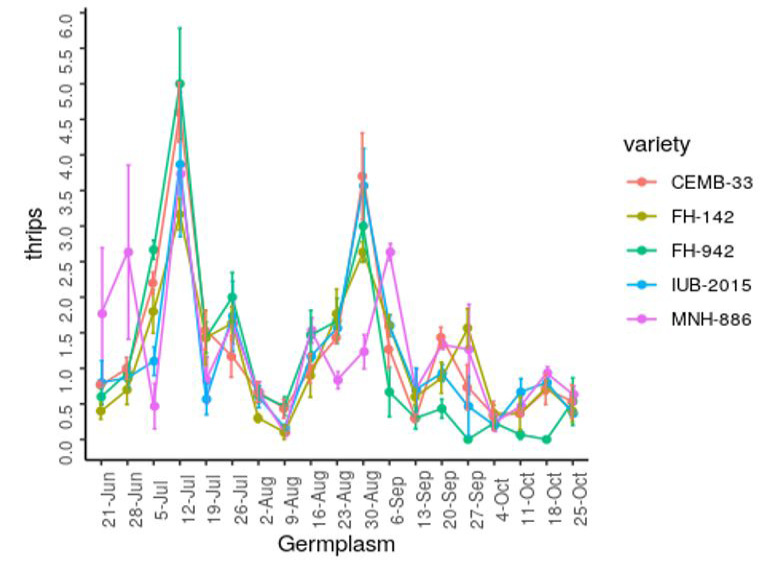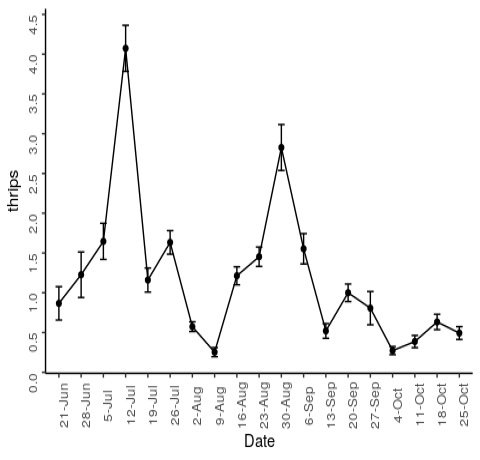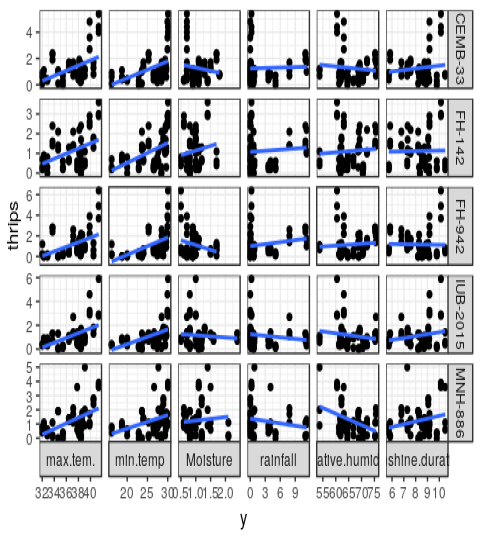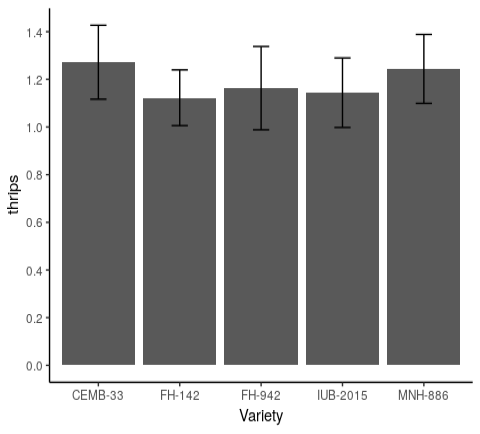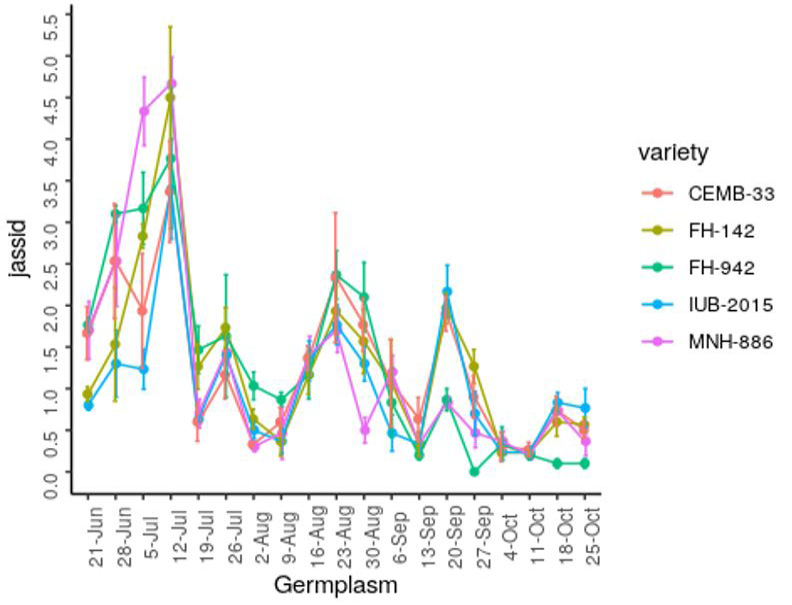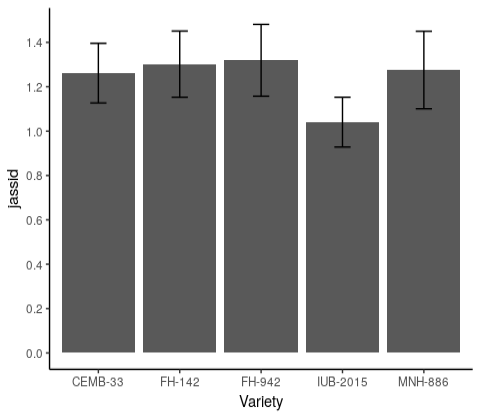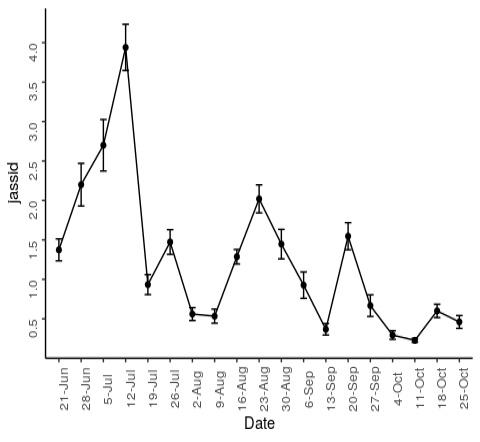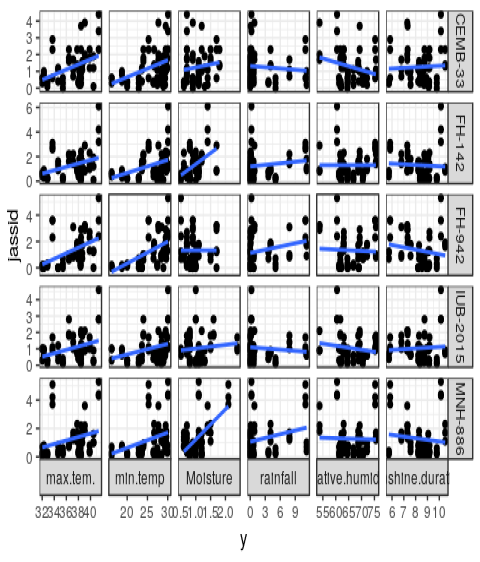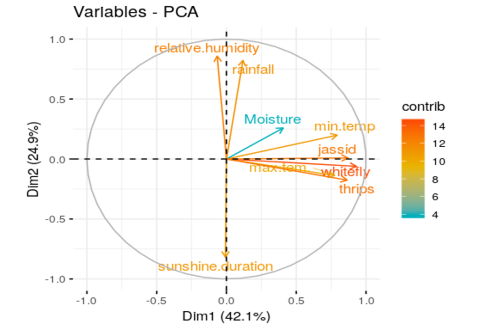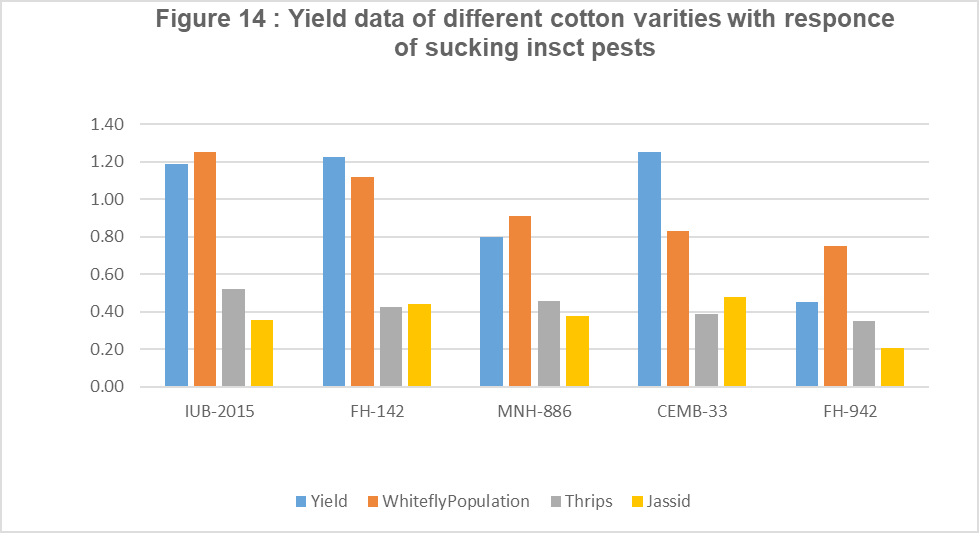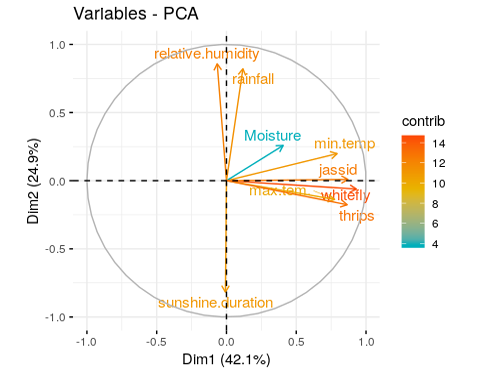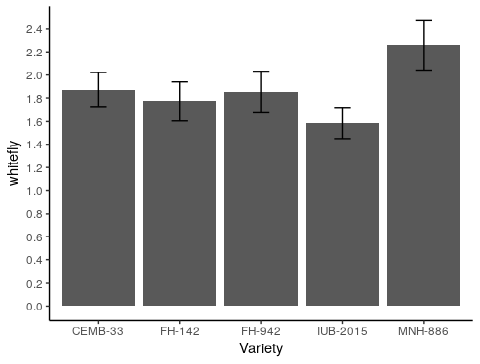Response of Sucking Insect Pest Fauna Towards Bt and Non Bt Cotton Genotypes under Varying Climatic Condition
Response of Sucking Insect Pest Fauna Towards Bt and Non Bt Cotton Genotypes under Varying Climatic Condition
Tamoor Ali1*, Muhammad Hamid Bashir1, Bilal Saeed Khan1, Abdul Ghaffar2, Danish Riaz3, Muhammad Zia ul Haq1, Shoaib Nawaz1, Aneeb Ali1, Iftikhar ul Hassan1, Ikram Ul Haq4, Muhammad Khuram Shahzad1, Usama Saleem5 and Tamsila Nazir2
Relationship between different population of whitefly and cotton germplasm.
Fluctuation of population of whitefly in different date of observation
Relationship of whitefly population with abiotic factors in different cotton cultivars
Relationship between population of thrips and cotton germplasm
Fluctuation of population of thrips in different date of observations
Relationship of thrips population with abiotic factors in different cotton cultivars
Comparison of population dynamics of thrips among varieties of cotton crop
Relationship between population of jassid and cotton germplasm
Comparison of population dynamics of jassid among varieties of cotton
Fluctuation of population of jassid in different date of observation
Relationship of jassid population with abiotic factors in CEMB-33
PCA Figure for environmental variation
Yield data of different cotton varities with responce of sucking insct pests.
Comparison of population dynamics of whitefly among varieties of cotton crop.



